New List Now Online
While the Worldwide Specimen Shells Web site goes through the final phases of a major face-lift,  our new price list (#49) is now available offering a number of uncommon to rare one-of-a-kind specimen marine and land shells. You can view the list without any membership sign-on obligation. Please contact us if you have questions about any of the specimens on the list. We hope you will enjoy this and future issues of Worldwide Shell Notes (WSN). Worldwide Shell Notes Issue #1 is available on our Web site in the "Shell Extras" section. A PDF version of WSN is available upon request. You can stop receiving future mailings at any time by clicking the "Opt-Out" link at the bottom of this page. As always, there is no cost for receiving WSN. our new price list (#49) is now available offering a number of uncommon to rare one-of-a-kind specimen marine and land shells. You can view the list without any membership sign-on obligation. Please contact us if you have questions about any of the specimens on the list. We hope you will enjoy this and future issues of Worldwide Shell Notes (WSN). Worldwide Shell Notes Issue #1 is available on our Web site in the "Shell Extras" section. A PDF version of WSN is available upon request. You can stop receiving future mailings at any time by clicking the "Opt-Out" link at the bottom of this page. As always, there is no cost for receiving WSN.
Regards,
Rich
Worldwide Specimen Shells and worldwideconchology.com
When you arrive at the home page of worldwideconchology.com you can click on "Conchology - The Art & Science of Nature" or "Worldwide Specimen Shells". Conchology - The Art & Science of Nature is a non-commercial Web site created in 1995 that contains a large gallery of shell images and notes about the pictured species, all arranged taxonomically. The site has many other resources for conchologists including slide programs and integrated links on each family page to useful and related sites for the particular molluscan family -- but no shells are for sale here. Worldwide Specimen Shells, on the other hand, is a Web site for shell collectors who want to purchase quality marine and non-marine shells that will add scientific value and aesthetic beauty to their collections. Worldwide Specimen Shells was established in 1977. Visit the ordering instructions on the menu tab to familiarize yourself with the easy ordering process. Send us your want lists too. Enjoy visiting and perusing the shell offerings.
Selected Shells From Current List

Cypraea (Austrasiatica) hirasei Roberts, 1913
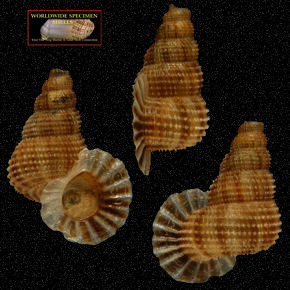
Annularia p. presasianum (Gundlach, 1863)
|
Conus baylei - An Earlier name for C. arubaensis
by Richard Goldberg
A beautiful and varied form of Conus spurius is frequently trawled by fishing boats along the northern coast of South America from Venezuela to Colombia. This form with a smooth body whorl has classically been referred to as C. spurius arubaensis Nowell-Usticke, 1968. Specimens range in size from about 30mm to as large as 80mm or more.
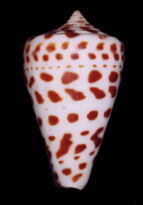 Usticke's holotype of Conus spurius arubaensis - Repository: AMNH - Size: 39x23 mm. Photo & data from the Conus Biodiversity Web Site.
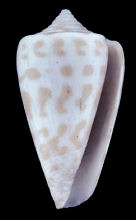 Holotype of Conus baylei - Repository: MNHN - Size: 31x17 mm. Photo & data from the Conus Biodiversity Web Site.
Reference:
VINK, D. L. N., 1985. The Conidae of the Western Atlantic. Part V (Conus spurius complex). La Conchiglia, XVII(9-10):6-15.
Beginner's Corner
Conchological Terms - M

Monotypic: A monotypic taxon has only one subordinate taxon, for instance the Terebrid genus Terenolla is monotypic being classified with only one species, T. pygmaea".
 Mottled: Spotted or blotched with different colors. Mottled: Spotted or blotched with different colors.
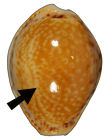 Mantle Line: The lengthwise line on the dorsum of many species of cowries created by a fleshy membranous covering of the mollusk called the mantle that extends up over the dorsum from either side of the shell. The mantle line is sometimes subtle consisting of only pigment, or it can be deeply etched into the surface of the dorsum. Mantle Line: The lengthwise line on the dorsum of many species of cowries created by a fleshy membranous covering of the mollusk called the mantle that extends up over the dorsum from either side of the shell. The mantle line is sometimes subtle consisting of only pigment, or it can be deeply etched into the surface of the dorsum.
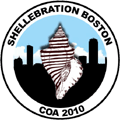 2010 COA Annual Convention
2010 COA Annual Convention
August 27 - 31
Boston, Massachusetts
[click for details]
|
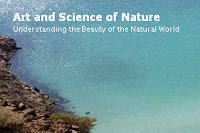 Art & Science of Nature - Understanding the Beauty of the Natural World. Art & Science of Nature - Understanding the Beauty of the Natural World.
has celebrated its first anniversary. Have you visited and read some of the entries? An article on Fire Ants and one about shell color have been added during the year. Art & Science of Nature (ASN) aims to bring together in one Blog the most beautiful and fascinating aspects of the natural world using the foundations of science and sociology to enable a better understanding and appreciation of nature. The Phylum Mollusca is the main focus of ASN, but is only one of many earthy topics to be explored. I hope you have an opportunity to visit soon.
|
 | Worldwide Specimen Shells & worldwideconchology.com |
| Worldwide Specimen Shells & worldwideconchology.com |
Opt-Out: Remove me from future mailings.
Our mailing address is:
| P.O. Box 6088, Columbia, MD 21045-8088; U.S.A. |
Our email:
| worldwide@rcn.com |
Copyright © 1977-2010 | Worldwide Specimen Shells & worldwideconchology.com | All rights reserved.
No contents of this publication may be used or reproduced without the express written consent of the publisher.
|
| The Mess With Mesanella |

Fig. 1 / Mesanella monochroa (Sowerby, 1841)
From Kobelt Bd. X (1905), Pl. VIII
This is considered the nominate form of the species.
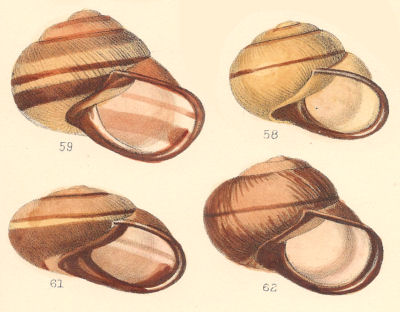
Fig. 2 / Mesanella monochroa palawanica (Pfeiffer, 1855)
From Pilsbry (1891) 2nd Series, Vol. 6, Pl.22 as Camaena palawanica.
Illustrates the high degree of variability of this species.

Fig. 3 / Mesanella monochroa form: lagunae (Hidalgo, 1891)
(left-center) from Kobelt Bd. X (1905), pl. VIII; (right) from Pilsbry (1891) 2nd Series, Vol. 6., pl. 26.

Fig. 4 / Mesanella monochroa forms: (left-center) conforms with the nominate form (44mm); (right) M. monochroa form: palawanica
Sarong, Palawan Island (47mm).
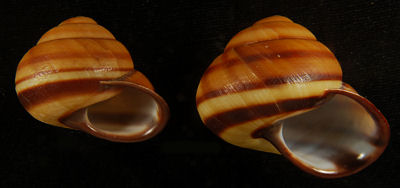
Fig. 5 / Mesanella monochroa form: lagunae (Hidalgo, 1891)
from Narra, Palawan Island.
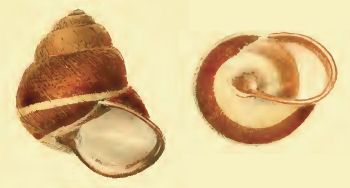
Fig. 6 / Mesanella trailli turrita (Möllendorff, 1905)
From Kobelt Bd. X (1905), Pl. VIII, fig. 6
Captioned as Camaena trailli, subspecies turrita Möllendorff. The illustrated shell is 55mm.
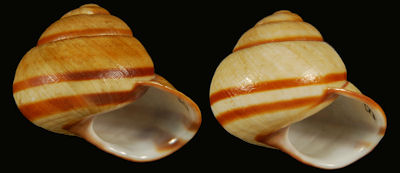
Fig. 7 / Mesanella trailli weberi (Bartsch, 1918)
Canipaan, southern Palawan Island; 50 & 53mm.
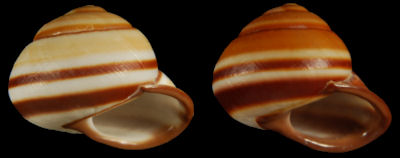
Fig. 7 / Mesanella trailli form: bugsukensis? These shells are commonly sold as M. monochroa, but in fact, may be M. trailli form: bugsukensis with which it conforms. The right specimen is confirmed from Bugsuk Island. Both specimens are 42mm in diameter.
Worldwide Shell Notes #2 (publication date: 1 August 2010) | Web publication by worldwideconchology.com | Publisher: Richard L. Goldberg, P.O. Box 6088, Columbia, MD 21045-8088, U.S.A. | email: worldwide@rcn.com | Copyright © 2010 Worldwide Specimen Shells & worldwideconchology.com | All rights reserved. The contents of this electronic publication may not be used or reproduced without the express written consent of the publisher.
|
by Richard L. Goldberg
Classification of the Genus: Mesanella Clench & Turner, 1952 was originally classified in the Family Camaenidae. Mesanella is now placed in the Family Bradybaenidae. The genus includes one, two or even 3 species depending on the literature referenced. The shell are of moderate size and solid, measuring about 40 to 50mm in diameter. The genus is limited to the Palawan province, Philippines on the islands of Palawan, Balabac and Bugsuk. Early literature reported M. monochroa from Tablas Island, a location that has now been determined erroneous.
Indentifying Mesanella shells has always been a rather messy undertaking due to the extreme variation of the species throughout its limited geographical range and the disagreement of classification in the literature. In recent years, Abbott (1989) considers Mesanella to be but one species, M. trailli being a synonym of M. monochroa. I am still not totally convinced of the correct classification myself. Here is a brief review of the names applied to the genus Mesanella.
Mesanella monochroa: Four names are now considered synonyms M. monochroa (Sowerby, 1841), with at least one still debated whether it is subspecies or even full species.
- doriae (Dohrn, 1881): a dark reddish brown form also thought to come from northern Borneo according to Pilsbry (1890)
- lagunae (Hidalgo, 1887): a smaller more elevated form reputedly from Balabac Island. Pilsbry reported it from Luzon, which is undoubtedly incorrect. It is similar in shape and coloring to M. trailli. M. m. lagunae is distinguished by having four brown bands, one (occasionally divided into two) narrow bands at the suture and three bands above and below the periphery, the bottom band below the periphery is the widest and enters the aperture while touching the top portion of the peristome. This seems to be the shell most commonly offered in the shell market today.
- palawanica (Pfeiffer, 1855): There is much debate whether the shell described as palawanica deserves to be a full species. Its seemingly different shell shape and lip color is probably not enough to elevate it to full species status given the extreme variability of the M. monochroa complex.
- sauliae (Pfeiffer, 1845) was described as a shell with solid light brown color and a single dark subperipheral dark band. This undoubtedly is a color form of M. monochroa.
Mesanella trailli: M. trailli (Pfeiffer, 1855) is the type species of the genus Mesanella. The type locality is stated by Sowerby as Palawan. Bartsch (1918) further narrowed down the locality of the nominate form as possibly being from the smaller islands in the Palawan Passage. Synonyms of M. trailli include:
- bugsukensis (Bartsch, 1918): a small race of about 35mm only known from Bugsuk Island. A paratype of this form is illustrated in Compendium of Landshells, pg. 142. Based on this photo of Bartsch's type specimen, the shells commonly sold as M. monochroa in recent years, may infact, be M. trailli form: bugsukensis. When considering the genus as monotypic, then the name M. monochroa would apply.
- turrita (Möllendorff, 1905) a seemingly abnormal shell with an elevated spire.
- weberi (Bartsch, 1918): a larger form reaching 50mm or more with weaker axial sculpture from southern Palawan Island.
Sans shell features, I believe the jury is out on classification of the M. monochroa complex until the animals of all of the forms are studied in greater detail.
REFERENCES:
Abbott, R. Tucker, 1989. Compendium of Landshells. American Malacologists, Inc: Melbourne FL. 240 pp.
Bartsch, P. 1918. Three New Philippine Island Land Shells. Proc. Bio. Soc. Vol.31, pp.199-202.
Faustino, L. A. 1930. Summary of Philippine land shells. Philipp. J. Sci. 42: 85-198.
Hidalgo, J. G. 1891-1901. Obras malacológicas. Parte I. Estudios preliminares sobre la fauna malacológica de las Islas Filipinas. Atlas. - Memorias de la Real Academia de Ciencias Exactas, Físicas y Naturales de Madrid 14: p. [1], Lám. A-C, I-CLXX [= 1-170]. Madrid.
Kobelt, W. 1905. Reisen im Archipel der Philippinen von Dr. C. Semper. Wissenschaftliche Resultate Bd. 10; Landmollusken Ergänzungen und Berichtigungen zum III. Bande, Die Landmollusken / von O.F. von Möllendorf, Wilhelm Kobelt und Gertrud Winter.
Pilsbry, H. A. 1890. Manual of Conchology. Ser. 2. Pulmonata. Academy of Natural Sciences of Philadelphia. Vol. 6.
Richardson, L. 1983. Bradybaenidae: Catalog of Species. Tryonia, Misc. Publications of the ANSP, No. 9, pp. 1-253.
Schileyko, A.A. 2004. Treatise on Recent Terrestrial Pulmonate Molluscs. Ruthenica, Supplement 2, Part 12, Bradybaenidae... p. 1627-1763.
|
| | |

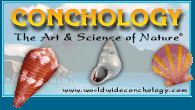
 our new price list (#49) is now available offering a number of uncommon to rare one-of-a-kind specimen marine and land shells. You can view the list without any membership sign-on obligation. Please contact us if you have questions about any of the specimens on the list. We hope you will enjoy this and future issues of Worldwide Shell Notes (WSN). Worldwide Shell Notes Issue #1 is available on our Web site in the "Shell Extras" section. A PDF version of WSN is available upon request. You can stop receiving future mailings at any time by clicking the "Opt-Out" link at the bottom of this page. As always, there is no cost for receiving WSN.
our new price list (#49) is now available offering a number of uncommon to rare one-of-a-kind specimen marine and land shells. You can view the list without any membership sign-on obligation. Please contact us if you have questions about any of the specimens on the list. We hope you will enjoy this and future issues of Worldwide Shell Notes (WSN). Worldwide Shell Notes Issue #1 is available on our Web site in the "Shell Extras" section. A PDF version of WSN is available upon request. You can stop receiving future mailings at any time by clicking the "Opt-Out" link at the bottom of this page. As always, there is no cost for receiving WSN.

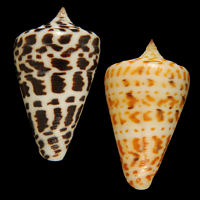


 Art & Science of Nature - Understanding the Beauty of the Natural World.
Art & Science of Nature - Understanding the Beauty of the Natural World. | Worldwide Specimen Shells & worldwideconchology.com |
| Worldwide Specimen Shells & worldwideconchology.com |
 Mottled: Spotted or blotched with different colors.
Mottled: Spotted or blotched with different colors. Mantle Line: The lengthwise line on the dorsum of many species of cowries created by a fleshy membranous covering of the mollusk called the mantle that extends up over the dorsum from either side of the shell. The mantle line is sometimes subtle consisting of only pigment, or it can be deeply etched into the surface of the dorsum.
Mantle Line: The lengthwise line on the dorsum of many species of cowries created by a fleshy membranous covering of the mollusk called the mantle that extends up over the dorsum from either side of the shell. The mantle line is sometimes subtle consisting of only pigment, or it can be deeply etched into the surface of the dorsum.







